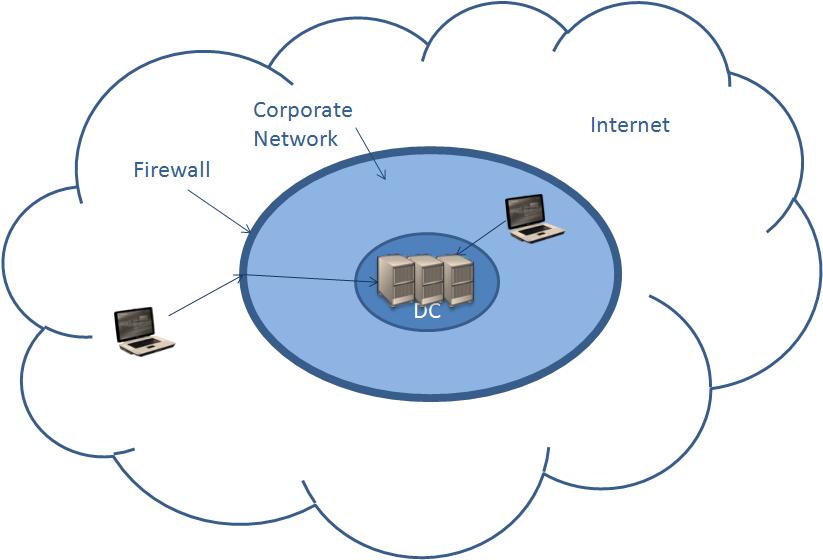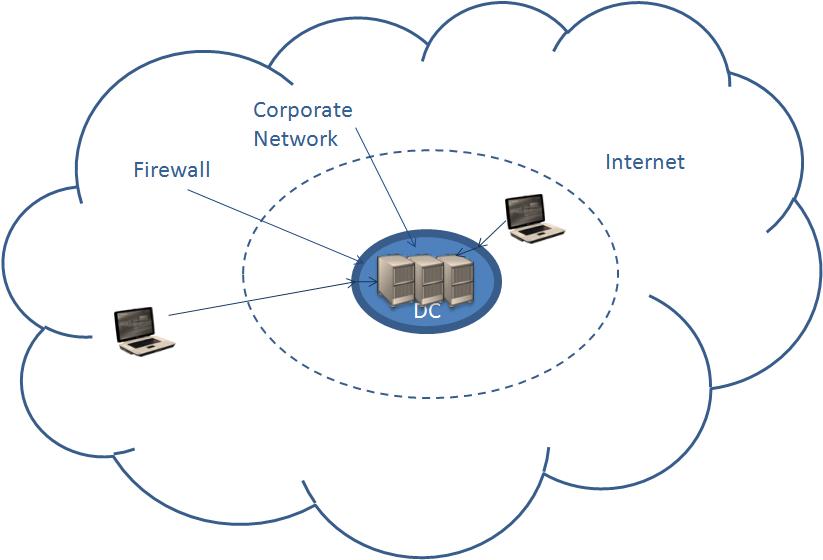The shrinking Enterprise
For the majority of my time I work away from the main Microsoft office and the one thing that really gets to me is the need to RAS in. The VPN connection is always going up and down and if I want to access an external web site then the speed has halved as all the traffic now goes via the corporate network. As you can imagine email traffic at Microsoft is high and the use of Sharepoint to share docs and lower the weight of emails is viral. So you end up forever having to log on through VPN wade through the security checks and finally, fingers crossed access the document. Alternatively you invest in Groove and the handy sharepoint integration tool which will cache sharepoint sites whenever you’re on the network.
Wouldn’t it be great if my machine could behave as though it was on the LAN whenever I want to access corporate data and to think I’m in the cloud whenever I want anything external?
Well, I’m not going to tell you about a funky device that will solve all these problems but I am hearing more and more about an emerging trend by many corporations to “Shrink their enterprise” that got me thinking that this type of thing is really what’s needed.
Many IT organisations are visiting their technology portfolios and asking the simple questions, “Do I care about this technology? Is it core or secondary to the business I support? Could I get this as a service elsewhere? What form would I like this service to take?”
In so doing technology assets such as email are first under the lens and interestingly the desktop (or laptop) is not far behind. “Why do we have to go through the cost of managing and maintaining these assets? Couldn’t we push that out to the user? Let them have the choice of what to purchase and they look after it as they would their home computer?” This is getting considerable traction but the sticking point comes down to security when accessing corporate resources and obviously the risk of having corporate resources (data in particular) on ones device. This is where the shrinking enterprise comes in to play.
One can imagine an enterprise as having a data centre at the middle with some level of perimeter security and then the corporate network bounded by some thick layer of network perimeter security layer for simplicity let’s just notionally call the firewall. If I am outside this firewall then in order to access corporate resources I need to create a link via VPN. However, if I am already inside the firewall then access to resources is pretty much direct.

Now imagine a scenario whereby we shrink the corporate firewall down to encapsulate just the data centre alone. This would render the model for accessing corporate resources the same for both the external user and the internal user.

The corporate network would then become little more complex than that of an internet cafe! You would all need to VPN in order to access corporate resources, but the cost in terms of performance for people located at the office would be minimal so as to not cause the frustrations of the home user. The ability to test a machine before it accesses these resources is easily configurable and so the possibility of reducing support costs for the desktop becomes much nearer to reality. It also reduces or at least consolidates the concerns of IT into a much more simplified model of operation.
However, that said, the problems for us remote user still remain. The need for the ‘switchable’ VPN routing device on your laptop still remains a dream, albeit a tangible and relatively simple dream to realise I would have thought. Maybe it’s not too far off being a reality;)! If not then the increased demand for more flexible, remote and home working options in the face of different working habits, green concerns etc. will certainly render such a device invaluable and certainly cement the path to shrinking the enterprise. Therefore those that are looking at this model already will undoubtedly benefit most moving forwards.